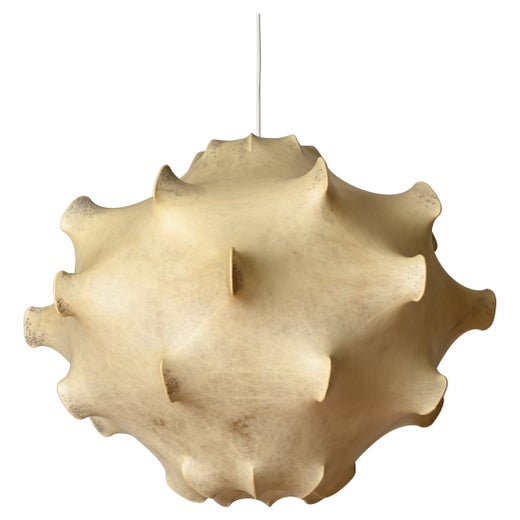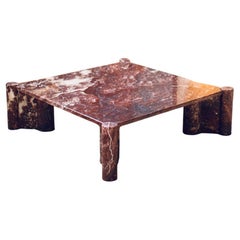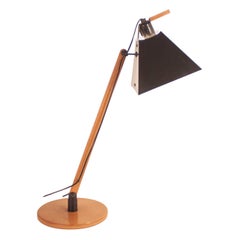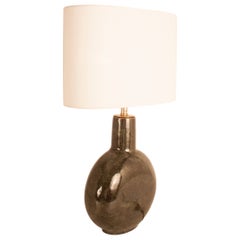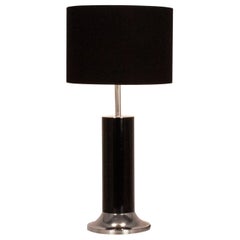Servomuto Table by Achille and Pier Giacomo Castiglioni for Zanotta, 1974
About the Item
- Creator:Achille & Pier Giacomo Castiglioni (Designer)
- Dimensions:Height: 26.78 in (68 cm)Diameter: 19.3 in (49 cm)
- Style:Mid-Century Modern (Of the Period)
- Materials and Techniques:
- Place of Origin:
- Period:
- Date of Manufacture:1974
- Condition:Wear consistent with age and use.
- Seller Location:Barcelona, ES
- Reference Number:1stDibs: LU4859222808632
Achille & Pier Giacomo Castiglioni
Milanese industrial designer-architects Achille and Pier Giacomo Castiglioni (1918–2002; 1913-68) created some of the most iconic furniture designs in the world, particularly those that originated in the realm of mid-century modern lighting.
In the late 1930s, after graduating from the acclaimed Polytechnic University of Milan, Pier Giacomo opened a design studio with his brother Livio and likeminded architect Luigi Caccia Dominioni. Achille, also a graduate of Milan Polytechnic, joined the group after completing his studies in 1944. The era’s architects were encountering difficulty in their attempts to secure building commissions, so the group focused on designing practical everyday objects such as the Model 547, a tabletop radio for Phonola that was encased in Bakelite.
The Castiglioni brothers produced wildly popular and innovative designs throughout the 20th century. While Livio departed the practice in 1952 to pursue lighting design and sound technology on his own, Pier Giacomo and Achille would continue to collaborate on a wealth of projects in the ensuing years.
Vintage furniture collectors may be familiar with Livio and Italian designer Gianfranco Frattini’s serpent-like Boalum lamp, while Achille’s Taraxacum hanging lamp — created for FLOS with sprayed plastic polymers originally intended for military use — as well as the Arco, Snoopy and Toio lamps, which were the result of the collaboration between Pier Giacomo and Achille, are milestones in modernist lighting design.
Also for FLOS, Pier Giacomo and Achille created a series of metal frames that, wrapped in the polymer, became floor lamps (Gatto) or pendant lights (Viscontea and Taraxacum), all released in 1960. The Gatto floor lamp takes its name from the Italian word for “cat” and the inspiration for its aesthetic from lighting that George Nelson developed for legendary American furniture manufacturer Howard Miller during the 1940s. Around the same time, the designer Tobia Scarpa (son of the famed Italian architect Carlo Scarpa and one-half of the widely revered postmodern husband-and-wife design duo Afra and Tobia Scarpa) created a floor lamp called Fantasma (1961) using the polymers technique. FLOS continues to make the Castiglionis’ innovative pieces today.
In addition to their provocative lighting works, Pier Giacomo and Achille also created stereo systems, decorative objects, seating, tables and other items for the likes of Brionvega, Alessi, Zanotta, Kartell and more.
Find vintage Achille and Pier Giacomo Castiglioni floor lamps, table lamps, pendants, seating and other furniture on 1stDibs.
You May Also Like
Vintage 1970s Italian Post-Modern Serving Tables
Metal, Steel
Vintage 1970s Italian Mid-Century Modern Side Tables
Steel
2010s Italian Side Tables
Steel
Vintage 1970s Side Tables
Steel
Vintage 1960s Italian Tables
Wood
2010s Italian Side Tables
Steel
Vintage 1980s Italian Mid-Century Modern Coffee and Cocktail Tables
Metal
20th Century Italian Post-Modern Side Tables
Metal
Vintage 1960s Italian Mid-Century Modern Industrial and Work Tables
Wood
Vintage 1950s American Mid-Century Modern Side Tables
Ceramic, Walnut
More From This Seller
View AllVintage 1970s Italian Mid-Century Modern Coffee and Cocktail Tables
Marble
Vintage 1970s Spanish Modern Table Lamps
Steel
Vintage 1970s Spanish Mid-Century Modern Table Lamps
Brass
Vintage 1970s Italian Mid-Century Modern Table Lamps
Chrome
Vintage 1960s Spanish Mid-Century Modern Desks and Writing Tables
Wood
Vintage 1960s Italian Mid-Century Modern Coffee and Cocktail Tables
Marble
Recently Viewed
View AllRead More
We Dare You Not to Smile at These Whimsical Italian Designs
Make anyplace your happy place with Italian furniture at its subversive best.
Rooms We Love: 11 Splendid Living Rooms
Common wisdom used to declare the kitchen the hub of the house. These days, the living room seems to have assumed the role of domestic focal point. Unlike the Victorian parlor, stiffly furnished and reserved for guests, today’s living room is a central place for reading, conversation and, well, living, with furnishings that lend themselves to both casual lounging and elegant entertaining.
